
If you’ve ever considered harvesting your own honey, you may be wondering about the process involved. Harvesting honey is an incredibly rewarding activity that allows you to enjoy the sweet fruits of your bees’ labor. But how exactly do you go about it? In this article, we’ll guide you through the steps of honey harvesting, from preparing your equipment to extracting the golden nectar from the honeycomb. So put on your beekeeper suit and get ready to unlock the secrets to a successful honey harvest!
Preparing for Honey Harvest
Suiting Up
Before embarking on your honey harvest, it is important to suit up in the appropriate protective clothing. Beekeeping can be a wonderful and rewarding hobby, but it is crucial to prioritize safety. A beekeeping suit, complete with a hat and veil, is essential to protect yourself from potential bee stings. Additionally, wearing thick gloves and sturdy boots will provide further protection. Remember, a comfortable and secure suit will allow you to work with confidence and ease.
Gathering Equipment
Ensuring you have all the necessary equipment before harvesting honey is essential for a successful endeavor. Some key items to include in your beekeeping toolkit are a bee brush, hive tool, smoker, honey extractor, uncapping knife, and various sizes of jars for storing the honey. These tools are instrumental in the different phases of the honey harvest process, from removing bees from frames to bottling and storing the honey. Make sure to gather all your equipment ahead of time and keep it clean and well-maintained for maximum efficiency.
Choosing the Right Time
Timing plays a crucial role in honey harvesting. The ideal time to harvest honey is when the majority of the honeycomb frames are capped, which indicates that the honey is fully ripe and ready for extraction. Bees typically cap the honey when the moisture level is low, ensuring high-quality honey. Carefully observe your beehive and check the frames for capping before proceeding with the harvesting process. Harvesting honey at the right time guarantees the best flavor and longevity.
Locating the Beehive
Locating your beehive accurately is a critical step in the honey harvesting process. Ensure that you are well aware of the beehive’s exact location and have easy access to it. It is advisable to choose a calm and warm day for harvesting, as bees tend to be more docile in such conditions. Familiarize yourself with the surroundings of the beehive to prevent any last-minute surprises or difficulties. Being well-prepared and organized will make your honey harvest smoother and more enjoyable.
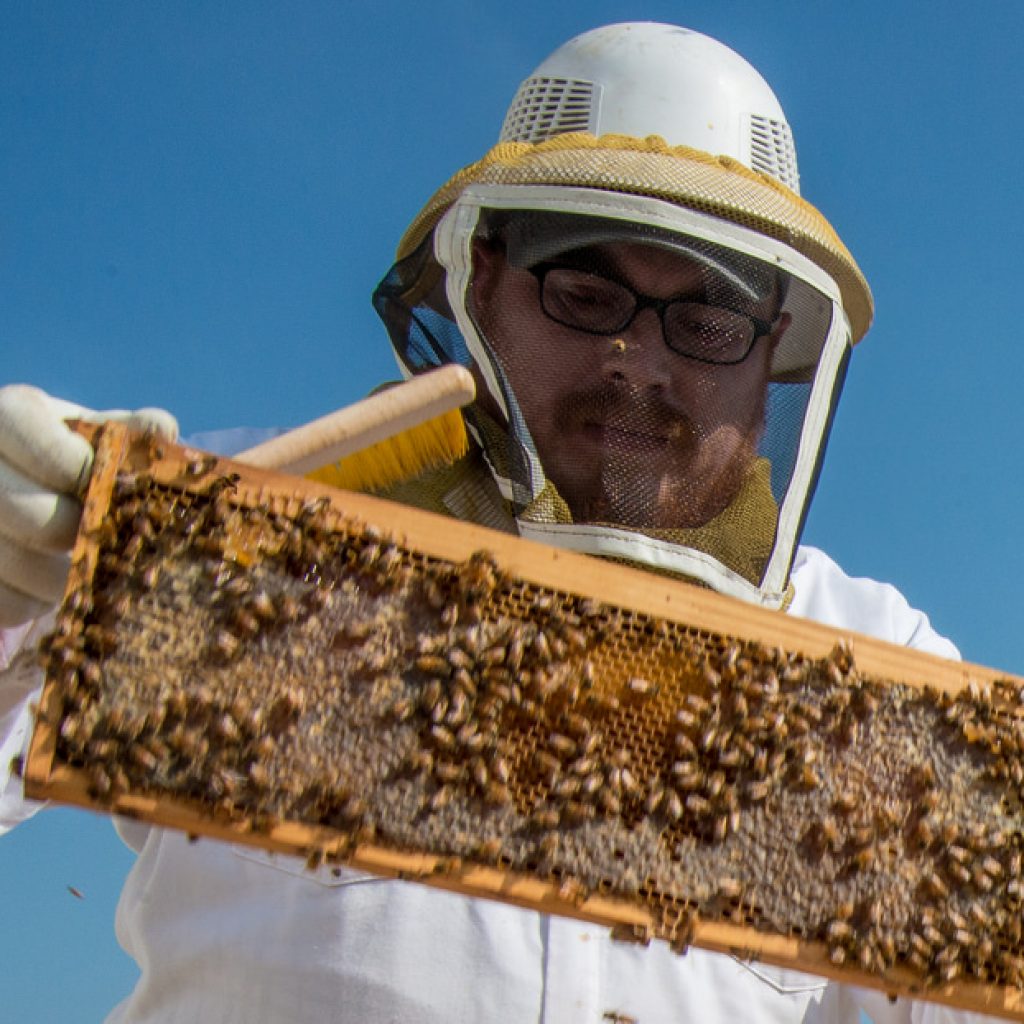
Harvesting Honeycomb Frames
Smoker Preparation
The smoker is an indispensable tool when it comes to beekeeping, especially during honey harvest. It helps keep the bees calm and less prone to stinging. Before starting, make sure your smoker is prepared and functional. Collect dry, organic materials such as twigs, leaves, or wood chips to fuel the smoker. Ignite the smoker and let it produce white smoke. Ensure that the smoker is properly packed, allowing the smoke to flow smoothly. A well-prepared smoker will help keep the bees relaxed and facilitate the honey harvesting process.
Opening the Beehive
To access the honeycomb frames within the beehive, you need to open it carefully. Begin by removing the outer cover, followed by any inner covers or queen excluders. Take your time and handle the components of the beehive gently, avoiding any crush or harm to the bees. As you open the hive, be aware of maintaining a calm and peaceful environment to minimize bee agitation. By methodically and calmly approaching the hive, you will ensure a smooth and successful honey harvest.
Removing Honeycomb Frames
Once you have opened the beehive, carefully remove the honeycomb frames. Slowly lift each frame, making sure not to crush or harm the bees. Take caution and pay attention to any signs of aggression from the bees, as they may become defensive when their honey is being harvested. Be gentle while handling the frames and maintain a steady hand to keep the bees calm. Remember, a tranquil environment during the honeycomb frame removal process will make the overall experience more enjoyable.
Inspecting Frames
Before proceeding further, it is crucial to inspect the honeycomb frames to ensure they are ready for extraction. Look for fully capped frames, which indicate that the honey is ripe for harvesting. Check for any signs of mold, pests, or diseases on the frames. If you spot any issues, separate those frames from the others and address the problem accordingly. By carefully inspecting the frames, you can ensure that only the finest honey is extracted, providing a high-quality product for your enjoyment.
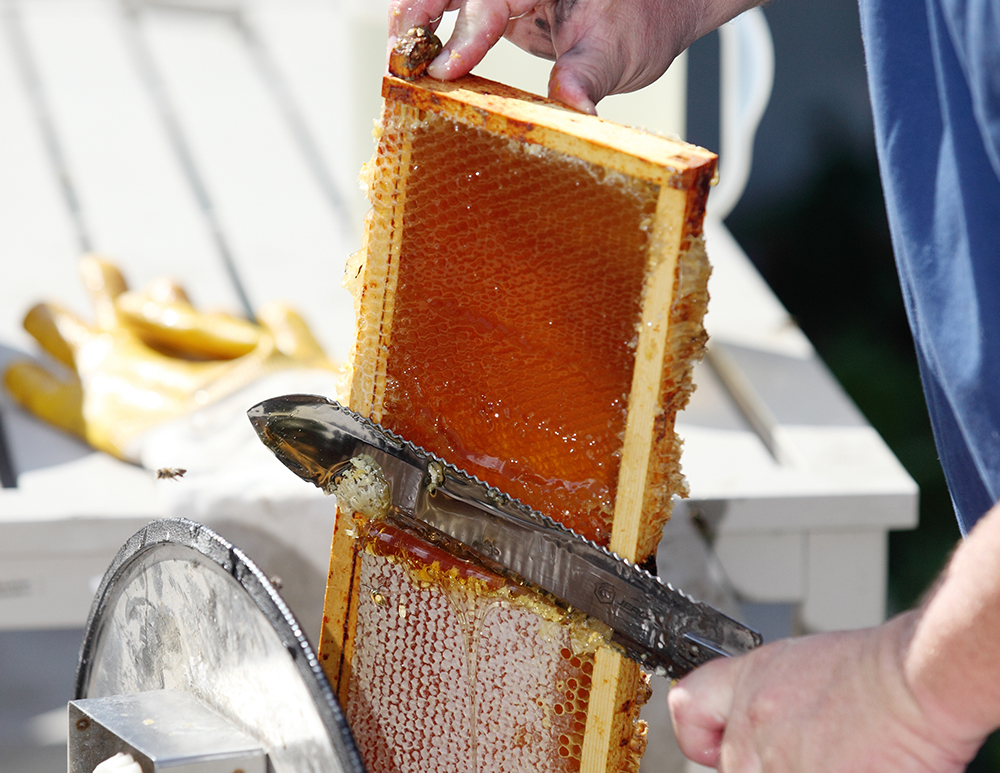
Extracting Honey from Frames
Removing Bees from Frames
Before extracting honey, it is important to remove the bees from the frames. One effective method is to use a bee brush, gently sweeping the bees off the frames and back into the beehive. Another approach is to use a bee escape board, fanning the bees out and encouraging them to leave the frames through a one-way escape. Give the bees ample time to depart, ensuring minimal damage to both the bees and the honeycomb frames. By efficiently and compassionately clearing the frames of bees, you can proceed with the extraction process smoothly.
Uncapping Frames
Once the bees have been cleared, it is time to uncap the honeycomb frames. Use an uncapping knife to carefully remove the wax cappings from each side of the frame. This exposes the honey-filled cells, preparing them for extraction. Be sure to work methodically and keep the knife steady, avoiding unnecessary damage or waste. Uncapping frames requires attention to detail and a steady hand, ensuring a clean and efficient process.
Using a Honey Extractor
A honey extractor is a valuable tool for the final step of extracting honey from frames. Place the uncapped frames in the honey extractor and carefully spin them. The centrifugal force will cause the honey to be expelled from the frames and collect at the bottom of the extractor. It is advisable to use a low-speed setting initially to prevent honey spillage or damage to the comb. Gradually increase the speed until the honey is fully extracted. A honey extractor simplifies the extraction process, allowing you to collect honey efficiently and effortlessly.
Filtering Honey
After extracting the honey from the frames, it is crucial to filter it to remove any impurities or debris. Line a clean, food-grade bucket with a mesh strainer or cheesecloth and slowly pour the honey into it. The mesh strainer or cheesecloth will catch any leftover wax, bee parts, or other solid particles. Allow the honey to filter naturally and avoid pressing or squeezing the honeycomb, as this can affect the clarity and quality of the honey. Filtering the honey ensures a clear, smooth, and pure final product.
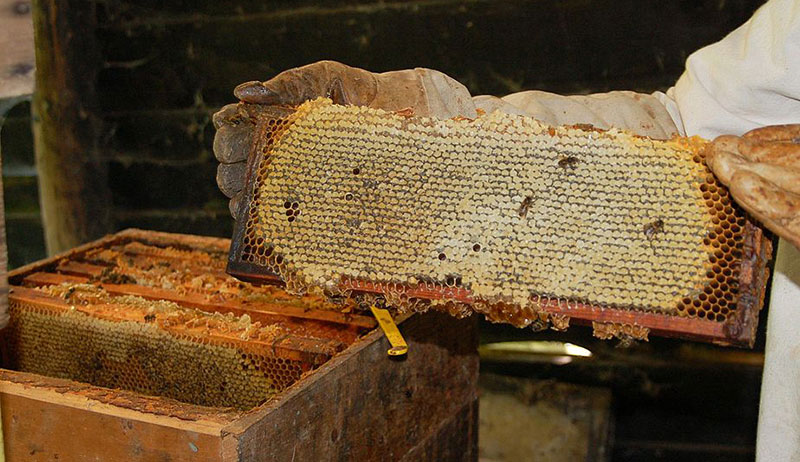
Bottling and Storing Honey
Preparing Jars
Before bottling the honey, ensure that your jars are clean, sterilized, and completely dry. It is important to use food-grade glass jars with tight-fitting lids to preserve the freshness and quality of the honey. Wash the jars in hot, soapy water, rinse thoroughly, and air dry or use a sterilizing solution recommended for food preservation. Well-prepared jars are essential for storing honey and maintaining its optimal flavor and consistency.
Filling the Jars
Once your jars are ready, it’s time to fill them with the golden goodness. Use a clean, food-grade funnel to pour the honey into the jars, leaving a small headspace at the top. Ensure a steady and controlled pour to avoid any spillage or waste. Take your time to fill each jar, enjoying the beautiful amber flow of the honey. Be mindful of maintaining proper hygiene throughout the process to keep the honey fresh and uncontaminated.
Labeling the Jars
To keep track of your honey harvest and add a personal touch, labeling the jars is a delightful step. Use adhesive labels or tags to write the type of honey, harvest date, and any other information you find relevant. This adds a professional touch to your honey jars and allows you to share the joy of your homemade honey with others. Labeling also enables you to keep track of the batches and flavors of different honey varieties you may have.
Storing Honey
Proper storage is essential to preserve the quality and flavor of your honey. Store the filled and labeled jars in a cool, dark, and dry place. Honey should be stored at room temperature, away from direct sunlight and heat sources. Do not refrigerate honey, as it may cause crystallization and alter the texture. Ensure that the lids are tightly sealed, preventing any air or moisture from entering. With proper storage, your honey will remain delicious and enjoyable for an extended period.
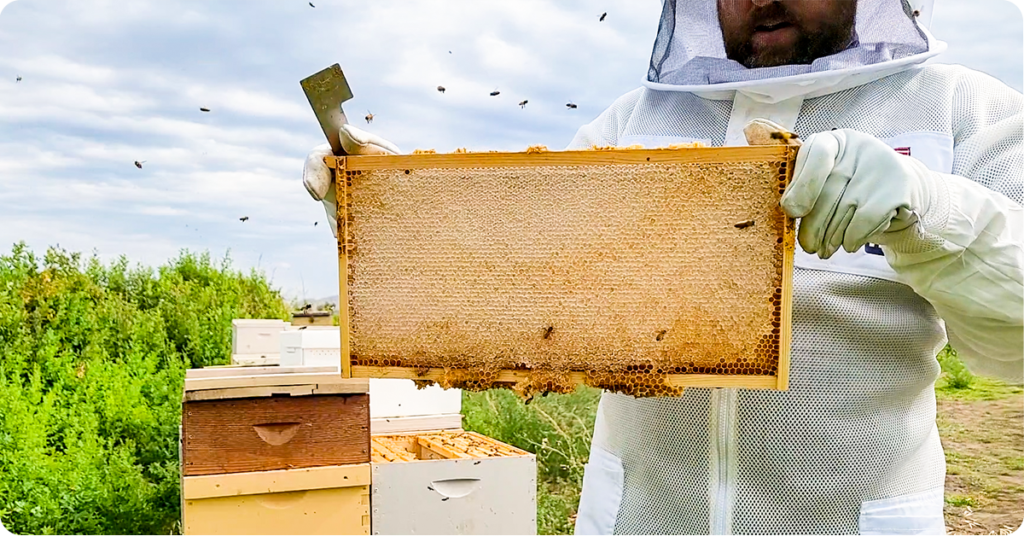
Additional Tips and Safety Precautions
Wearing Protective Clothing
Beekeeping poses risks, primarily due to possible bee stings. Wearing protective clothing is crucial to minimize these risks. In addition to a beekeeping suit, hat, veil, gloves, and boots, consider using ankle straps to prevent bees from entering your suit through the leg openings. Remember to fasten all closures securely to prevent bee access and prioritize your safety.
Dealing with Aggressive Bees
While most bees are generally docile, some colonies may display aggression. If you encounter aggressive bees during the honey harvest process, it is essential to remain calm and avoid sudden movements. Slowly and gently withdraw from the hive, ensuring not to provoke or alarm the bees further. Seek professional advice if you encounter persistently aggressive behavior to address the situation effectively.
Properly Sealing the Beehive
After the honey harvest, it is crucial to properly seal the beehive to protect the remaining bees and discourage unwanted pests from entering. Ensure that all covers, inner covers, and queen excluders are securely in place. This helps maintain the hive’s integrity and allows the bees to continue their essential work without disruptions.
Cleansing Equipment
Maintaining clean and hygienic equipment is vital for successful honey harvesting and the overall health of the bee colony. After each harvest, clean and sanitize the honey extractor, uncapping knife, bee brush, and any other tools used in the process. Proper cleansing prevents contamination and ensures the equipment is ready for your next honey harvest.
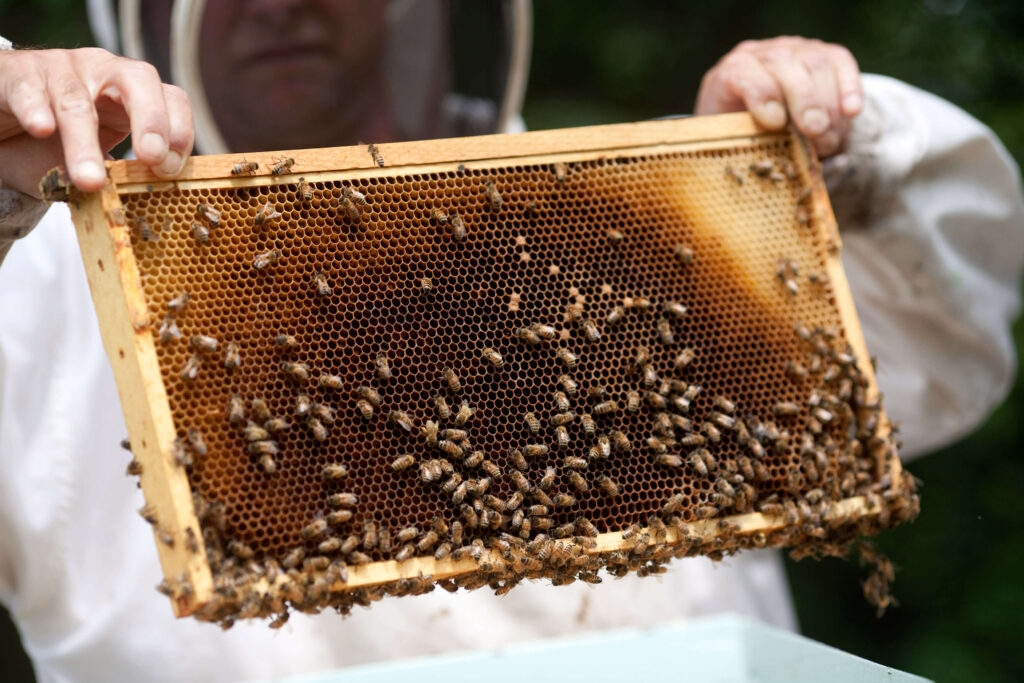
Conclusion
Harvesting honey is a rewarding and exciting endeavor for every aspiring beekeeper. By following the steps outlined in this comprehensive guide, you can confidently embark on your honey harvest journey. From preparing yourself and gathering the necessary equipment to extracting, bottling, and storing honey, each step is essential in ensuring the production of high-quality, delicious honey. Remember to prioritize safety, maintain a calm and tranquil environment, and enjoy the sweet fruits of your labor. Happy honey harvesting!